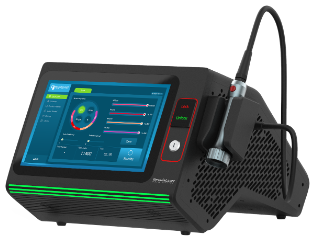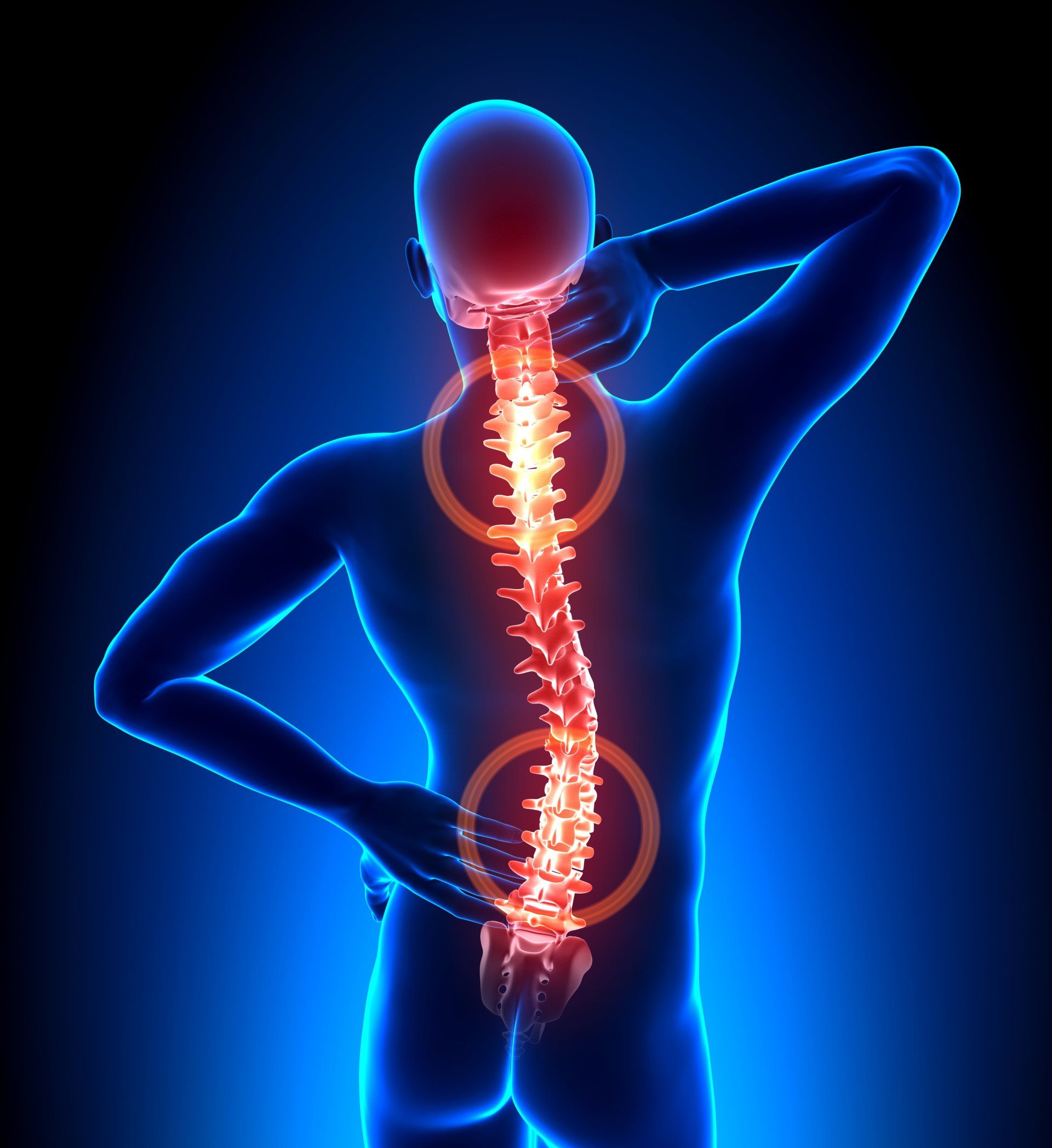Laser Therapy
Cold & Deep Tissue Laser Therapy
Regardless of the injury or source of pain (Auto, Sports, Work related injury or degenerative chronic pain conditions), Class IV Deep Tissue Laser Therapy:
- Alleviates Pain
- Reduces Inflammation
- Accelerates Recovery
- Improves Tissue Health
Whether you’re recovering from an injury or struggle with a chronic pain condition, you know that pain and inflammation can hold you back from doing the activities you love.
High intensity laser therapy is a drug-free, non-invasive treatment for pain relief that utilizes the most advanced medical technology available today. Our devices deliver light energy right to the body’s cells, aggressively treating pain and inflammation at the source so you can get back to doing what you love.
Laser therapy can be safely used as a replacement for pharmaceutical drugs. This pain relief treatment is FDA cleared and enables patients to have an alternative to drugs and surgery.
Patients generally see results after 4 to 8 treatments. Your therapist will develop a treatment plan that is optimal for your best outcome.

Our Newest 45 Watt Therapy Laser
How Does Laser Therapy Work?
Using handheld laser diodes and LED clusters, PBM (Photobiomodulation) Therapy is the application of red and near-infrared light to tissue where there is degeneration or injury, to improve, repair, and reduce inflammation and pain. This is achieved via Laser Therapy’s ability to reduce oxidative stress which is accepted as the underlying trigger for most diseases and degenerative conditions. Oxidative stress is also a component in the inflammatory phase of acute and chronic injuries.
Intended uses of PBM Therapy include:
- Restoration of motion to joints
- Improved muscle performance
- Decreased post exercise soreness
- Adjunct to obesity as part of a diet and exercise program
The clinically-supported benefits of red and near-infrared light are:
- Less pain and inflammation
- Faster rate of recovery after injury
- Earlier return to physical health
- Reduced fat and cardio-metabolic risk factors
- Less soreness after exercise, faster recovery from exercise
Laser therapy is when laser light is tuned to specific wavelengths and frequencies then applied to an organism to stimulate metabolic processes at the cellular level. Laser light holds its intensity until it is absorbed by a medium; in the case of laser therapy, the medium is the body. The photon energy of laser light can effectively penetrate the skin and underlying structures, which accelerates the body’s natural healing process. At the cellular level NO (nitrous oxide) is released and frees up the CCO (cytochrome C Oxidase) that stimulates the mitochondria to produce more ATP - the cellular rocket fuel for energy. Therapeutic lasers increase the energy available to the cells, allowing the cells to uptake nutrients faster and dispose of cellular waste more efficiently. This is achieved by an increase in cellular activity, an increase in blood flow to affected areas, reduced edema, and reduced pain in the damaged areas.
Laser therapy utilizes the wavelengths and frequencies of visible red and near infrared (NIR) light to treat a variety of conditions, at their source, within the body through safe, non-invasive, and painless procedures.
See What Dr. Oz says about it below:
How Does Laser Therapy Reduce Pain?
High Intensity Laser (HIL) technology is based on the well-known principle of low level laser therapy (LLLT). High power and choice of the right wavelength allow for deep tissue penetration. HIL offers powerful and non-addictive form of pain management. Through a natural process of energy transfer (biostimulation and photomechanical effect) it speeds up healing and regeneration. HIL is particularly effective in treatment of sport injuries, e.g. muscle strain or joint distortion, and back pain caused by e.g. herniated disc or disorders in the cervical region causing neck pain.
Lasers are also very effective for inflammatory conditions, including peripheral neuropathy, tendonitis, bursitis, and capsulitis. Strains, sprains, and repetitive motion injuries all have an inflammatory component and can be successfully treated with laser. There is no particular condition that responds more quickly to laser. However, some patients will respond faster than others for the same condition as individual healing rates can vary.
Laser therapy can be used as a stand-alone treatment, or with rehabilitative exercise therapy.

Pain Relief: Laser decreases nerve sensitivity by decreasing bradykinin; a pain eliciting chemical. It normalizes ion channels [cellular gatekeepers] and releases endorphins [body’s natural pain reliever] and enkephalins [related to endorphins] that produce an analgesic effect. It also has a pain-blocking effect on certain nerve fibers.
Anti-inflammatory/Healing: Laser increases ATP, which is stored energy [ATP is the acronym for adenosine triphosphate]. This increased energy accelerates the repair processes of the cell. Laser also causes a widening of the arteries and veins around the injury which helps to remove damaged cellular debris and increase nutrients and oxygen. White blood cell activity is enhanced leading to a more rapid repair process. Also, some molecules that increase inflammation are reduced, and beneficial antioxidants like superoxide dismutase are increased.
Accelerated Tissue Repair and Cell Growth: Photons of light from lasers penetrate deeply into tissue and accelerate cellular reproduction and growth. As a result of exposure to laser light, the cells of tendons, ligaments, nerves, and muscles are repaired faster.
Improved Vascular Activity: Laser light increases the formation of new capillaries in damaged tissue, which speeds up the healing process, and closes wounds quickly.
Trigger and Acupuncture Points: Laser is particularly effective in extinguishing painful trigger points. It is also an effective way of stimulating acupuncture points without the discomfort associated with needling.
Reduced Fibrous Tissue Formation: Laser therapy reduces the formation of scar tissue following tissue damage from repetitive motion injuries, cuts, scratches, burns or surgery.
Faster Wound Healing: Laser light stimulates the building blocks of collagen, which is important in the wound healing of damaged tissues. Collagen is the essential protein required to replace old tissue or to repair injuries. As a result, the laser is effective on open wounds and burns.
Stem Cell Activation: Laser increases the number of stem cells, which enhances healing.
Get Out of Pain!
Take Back Control of Your Life!
Be More Active
People who are more active and able to exercise - Live Longer!
Be More Productive
People Who Get Out of Pain...Get More Done!
Be a Happier You
People Who Get Out of Pain Have a More Positive Outlook on Life and are Happier.
How does Laser Therapy Reduce Inflammation?
1. Stabilization of the cellular membrane:
Ca++, Na+ and K+ concentrations, as well as the proton gradient over the mitochondrial membrane are positively influenced. This is accomplished in part, by the production of beneficial Reactive Oxygen Species aka (ROS). These ROS’s modulate intracellular Ca++ concentrations and laser therapy improves Ca++ uptake in the mitochondria.
2. Enhancement of ATP production and synthesis:
ATP production and synthesis are significantly enhanced, contributing to cellular repair, reproduction and functional ability. Photonic stimulation of Cytochrome c Oxidase, a chromophore found on the mitochondria of cells, plays a major role in this rapid increase in production and synthesis of ATP.
3. Stimulation of vasodilation:
Vasodilation is stimulated via an increase in Histamine, Nitric Oxide (NO) and Serotonin levels, resulting in reduction of ischemia and improved perfusion. Laser-mediated vasodilation enhances the transport of nutrients and oxygen to the damaged cells and facilitates repair and removal of cellular debris.
4. Acceleration of leukocyte activity:
Beneficial acceleration of leukocytic activity, resulting in enhanced removal of non-viable cellular and tissue components. Thus allowing for a more rapid repair and regeneration process.
5. Increased prostaglandin synthesis:
Prostaglandins have a vasodilating and anti-inflammatory action.
6. Reduction in interleukin 1:
Laser irradiation has a reducing effect on this pro-inflammatory cytokine that has been implicated in the pathogenesis of rheumatoid arthritis and other inflammatory conditions.
7. Enhanced lymphocyte response:
In addition to increasing the number of lymphocytes, laser irradiation mediates the action of both lymphatic helper T-cells and suppressor T-cells in the inflammatory response. Along with laser modification of beta cell activity, the entire lymphatic response is beneficially affected by laser therapy.
8. Increased angiogenesis:
Both blood capillaries and lymphatic capillaries have been clinically documented to undergo significant increase and regeneration in the presence of laser irradiation.
9. Temperature modulation:
Areas of inflammation typically demonstrate temperature variations, with the inflamed portion having an elevated temperature. Laser therapy has been shown to accelerate temperature normalization, demonstrating a beneficial influence on the inflammatory process.
10. Enhanced superoxide dismutase (SOD) levels:
Laser stimulated increases in cytokine SOD levels interact with other anti-inflammatory processes to accelerate the termination of the inflammatory process.
11. Decreased C-reactive protein :
Laser therapy has been shown to lower the serum levels of these inflammation markers, particularly in rheumatoid arthritis patients.
Check out the links below to medical studies supporting the use of Lasers:
https://www.ncbi.nlm.nih.gov/pubmed/22169831
https://www.ncbi.nlm.nih.gov/pubmed/23093133
https://www.ncbi.nlm.nih.gov/pubmed/12210592
There are a endless number of studies to support the use of lasers for pain, in fact over 2000! Both class 3 and class 4 are effective if used properly by a trained technician that specializes in laser therapy and not just a clinic that wants to see how much more money they can make by adding a laser to their practice.
The Primary Difference Between Class 3b and 4 Lasers
Therapy lasers have been used and researched extensively in Europe for more than 30 years. However, the United States Food and Drug Administration (FDA) only cleared a low level laser in 2002, and the first class IV therapy laser in 2003. Low Level Laser Therapy (LLLT) and it’s known effects have already been reviewed extensively in this journal. The most important clinical and therapeutic difference between Class IV Laser therapy and LLLT is that the Class IV is able to produce a primary bio-stimulative effect on deeper tissues than lower powered lasers— while also producing substantial secondary and tertiary effects. The FDA approved indications for use of Class IV laser include the following:
- relief of muscle and joint aches, pain and stiffness;
- relaxation of muscles and muscle spasms;
- temporary increase in local blood circulation; and
- relief of pain and stiffness associated with arthritis.
Conclusion
Therapy lasers have been an exciting addition to the health care treatment arsenal. The development of Class IV therapy lasers represents the next generation of light therapy. By maximizing the primary effects, Class IV therapy lasers are able to induce extremely rapid clinical responses.
External Factors That Can Control Laser Effectiveness
- Toxicity - if you are toxic it is best to utilize a detox while you are being treated or before.
- Defencies - If you have any nutritional or vitamin deficiencies then you should at minimum take a good daily
- Infections - active infections can affect how fast laser therapy works
- Dehydration - this is very important - you must stay properly hydrated for lasers to help the body heal
- Oxygen - if you have a condition that affects your oxygen levels in the blood - you may need to utilize oxygen
- Lack of Phytonutrients, Minerals or Vitamins - all these are necessary for the body to heal itself faster and utilize the laser stimulation to help that process

